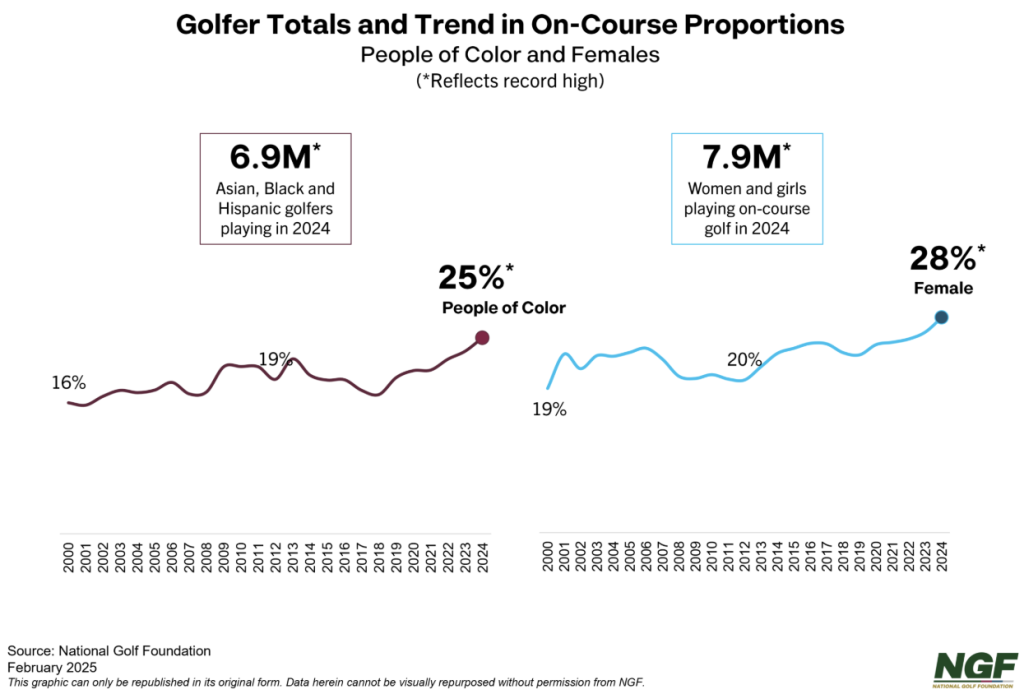The National Golf Federation (NGF) has reported that the latest participation numbers show unprecedented diversity in sport.
“Year-end data for 2024 shows that more than one-quarter of green-grass golfers in the U.S. are women and girls or people of color, two distinct but overlapping segments that have historically been underrepresented in the sport,” the NGF said in its report summary.

Among the 28.1 million Americans who played golf on a golf course in 2024, the most since 2008, 28 percent were female, and 25 percent were Black, Asian or Hispanic, both representing the highest proportions on record, according to the NGF.
“These numbers — not mutually exclusive — reflect the continued evolution of the sport’s participant base, particularly when compared to historical benchmarks,” the trade association said.
The NGF observed that the trend has been more pronounced in recent years, particularly since the onset of the pandemic.
“Since the start of the pandemic, there has been a net increase of 2.3 million females and 2.1 million golfers of color playing on course,” the NGF noted. “Women and girls have been particularly impactful in driving the sport’s post-pandemic growth, accounting for approximately 60 percent of the net gain in green grass golfers since 2019. The female golfer population has reached nearly 7.9 million — an all-time high.”
The NGF said this shift represents a significant increase compared to 2012 when females accounted for 20 percent of on-course golfers.
“That lower proportion coincided with the aftermath of the Great Recession when many households faced tighter finances and an increase in two-income families, leading to reduced free time and less discretionary spending on pursuits like golf,” the NGF noted. However, the NGF also said the growth in racial and ethnic diversity has been even more dramatic when it viewed the data over a more extended period.
“In 2024, there were almost 7 million Black, Asian and Hispanic on-course golfers, also a record total,” the report suggests. “This stands in contrast to 1990, when people of color represented 8 percent of green grass golfers. By 2000, in part because of the emergence of Tiger Woods, this representation rose to 16 percent.”
The NGF said the ongoing shift mirrors broader demographic changes in the U.S. population, which continues to become increasingly diverse regarding racial and ethnic makeup.
The Foundation said golf’s off-course-only participant pool is even more diverse, with females comprising 43 percent of the 19 million Americans playing off-course forms of golf exclusively, while people of color reportedly make up 45 percent of the group.
The NGF closed its report by stating that the record levels of participation and representation in these key segments suggest that golf is not only becoming more reflective of America’s changing demographics but “the industry’s efforts to create a more inclusive environment are bearing fruit, setting the stage for continued growth and diversity in the years ahead.”
Image courtesy UBGA













